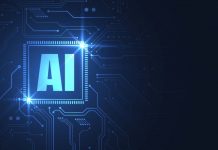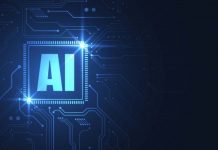This article is written by Gagandeep Singh Narula pursuing a Diploma in Advanced Contract Drafting, Negotiation, and Dispute resolution from Lawsikho.
This article has been published by Sneha Mahawar.
Table of Contents
Introduction
The judicial system in India is not reformed due to the pendency of cases, shortage of judges and officers, long hearing dates along with lengthy court procedures. All these issues lead to delaying justice, which is equivalent to the denial of justice. To restore the effectiveness of the judicial and law enforcement systems, Artificial Intelligence (AI) needs to be incorporated into the justice administration system. The words of the former Hon’ble Chief Justice of India S.A. Bobde, “we have a possibility of developing Artificial Intelligence for the court system. Only to ensure that the undue delay in justice is prevented” points out the need for AI for ensuring speedy justice. AI, when clubbed with the concept of e-courts, is likely to fulfill the purpose of integrating Information and Communication Technologies (ICT) in courts. The article presents the real-world applications of AI in the legal sector and various measures taken by the State Governments to amend the traditional legal system. Furthermore, it makes readers aware of the positive and negative aspects of AI in the context of the judicial system followed by various judgments, thus stating the positive need to incorporate AI in the legal system.
What is Artificial Intelligence
The term Artificial Intelligence, as devised by John McCarthy, who is known as the father of AI, described it as “the science and engineering of making intelligent machines”. Theoretically, AI deals with the computation and processing of tedious tasks with the help of machines and without the need for direct human intervention. AI programs imitate human intelligence behaviours via planning, problem-solving, and knowledge representation. The programs capture user preferences based on their photos, habits, patterns, and perceptions. The applications of AI are found in many aspects of our lives, starting from agriculture to industry, education, finance, communication, healthcare, etc. In addition to this, AI can be a permanent part of the criminal justice ecosystem that can reform investigation and crime predictions. The next section explores the burning areas in which AI can be applied in real-world scenarios, thus improving the criminal justice system in India.
Application of Artificial Intelligence in the legal industry
The key areas in which artificial intelligence is being used, or can find application in the near future, are discussed below.
Use of AI by law enforcement agencies
AI can help improve the efficiency of law enforcement agencies in many ways. This includes the introduction of biometric details such as the face, speech, blood group, and fingerprint details of various suspects to ease the investigation process and tracking of criminals. AI-based technology can be effectively used to guide investigation officers on investigation procedures. It reduces the possibility of procedural errors by officials. Further, an AI-enabled digital database containing details of offences, modus operandi, and similar offences committed at different places can also be created. The application of AI has already found a strong footing in this area, as indicated examples such as the AI-based face recognition system named ABHED (AI-Based Human Efface Detection) developed by Staqu technologies with the help of Punjab and Rajasthan Police; AI-powered equipment introduced by Odisha police to analyze crime data; TRINETRA, an AI-based face recognition app launched by Uttar Pradesh police; E-Pragati database launched by Andhra Pradesh Govt; and AI center set up by Delhi Police to handle crimes, in association with IIT Delhi.
Further, with the help of forensic analysis, an AI-powered system can be used to identify the minute biological materials present at the crime scene. The materials include blood, urine, saliva, hair, semen, fingerprints, etc. It is made possible by using AI with cognitive data analytics, identification, and similarity pattern extraction features. AI programming, along with big data, can help in the identification of crime spots by interacting with space and time-related information. Likewise, an outbreak of theft in one area may help predict similar activities in surrounding areas. The evidence collected at the crime spot can provide a clue regarding the prior use of the same weapon with the help of an AI-enabled database. AI algorithms can help in discovering pattern signatures in gunshot analysis. It is used to detect bullet waves to determine available guns and estimate the possibility of legal authorities in the investigation.
AI can also help jail authorities to maintain a vigil on criminal activities going inside or near the jail premises. With the help of AI-based surveillance systems and drone technology inside jail premises, unlawful activities can be monitored easily and efficiently. For instance, UP Govt in association with Staqu technologies has launched an AI-based video analytics platform called JARVIS to scan information from CCTV footage across prisons.
Use of AI by the judicial system
In India, the doctrine of stare decisis plays an important role in making judicial decisions. It requires adherence to decisions of higher courts as a point of reference for reaching decisions. An AI-based database having a copy of decisions would make this tedious task easier. AI-based technology can be used to record the statements made before the court without any manual errors. It allows transparency in conducting trials. Manual execution of process involving issuing of summons/notices, presence of witnesses, next date of hearing, etc. leads to undue delay in timing. An AI-based system can be used to reduce latencies and ease the trial process. The use of AI can summarize or make the contents of legal documents precise so enabling judges to grant these interim orders quickly.
While dealing with criminal cases, a judge has to take various decisions like granting bail to the accused, etc. With the help of AI-powered machines, these decisions are made simpler, which can aid judges in determining the outcome of cases. For example, the Public Safety Assessment (PSA) by the Arnold Foundation is one of the AI-based tools used in USA courts.
An AI-based translation software named SUVAS (Supreme Court Vidhik Anuvaad Software) has been launched by the Apex Court to translate English judicial documents into nine vernacular languages. It will help laymen understand the court’s legal documents and proceedings. The Supreme Court, in association with the National Informatics Centre, has also launched an official multilingual mobile app to provide real-time access to the status of court proceedings, circulars, reports, and other law-related information to litigants, advocates, and citizens. The app is available on IOS in English, Hindi, and six other regional languages. Another example is the SUPACE (Supreme Court Portal for Assistance in Courts Efficiency) portal of the Supreme Court which helps analyse large amounts of data pertaining to case filings, making it easier for judges to differentiate the important facts and issues in a new case.
Use of AI by law firms and legal professionals
AI is useful for advocates in producing discovery responses, responsive pleadings, and other documents just by uploading the complaint or discovery request with jurisdictional requirements. LegalMation is an AI-based platform that helps advocates and professionals in speeding up the process of litigation. AI-trained machine learning algorithms are used to perform the classification and clustering of different types of documents by detecting the hidden similarities among them.
AI can also help with analysing contracts and reviewing documents. A well-known firm named Cyril Amarchand Mangaldas, in association with Kira Systems introduced AI-based machine learning software that enables the identification and analysis of risky provisions/clauses in agreements by searching through extensive volumes of online databases.
Artificial Intelligene : a gift or a curse to the legal sector
Whether AI is a blessing or a curse is a never-ending debate. The primary idea for employing AI in the legal sector and daily life is to simplify and uncomplicate tasks. It is plausible that AI will soon replace tedious jobs and manpower used for solving these repetitive tasks. AI will enable lawyers and law firms to be more precise and focused in the legal system. The use of AI can save time and helps increase efficiency, thereby resulting in faster delivery of justice. It can lead to increased productivity and higher outputs, enabling lawyers and law firms to get more work done in shorter periods of time. It can also automate monotonous tasks, such as drafting standard-form contracts, proofreading, etc.
That being said, the use of AI in the legal industry is limited as machines lack originality, creativity and innovative skills. AI certainly lacks the capability to deliver reasoned judgments on hitherto unexplored legal issues, as it is no match for a human brain’s logic and reason. The use of technology always comes with the associated risk of a data breach. Legal information is extremely sensitive and client-attorney confidentiality cannot be put at stake for the sake of efficiency. Lastly, increased use of AI is also likely to raise unemployment levels in the legal industry.
Conclusion
There is no doubt that AI is becoming part and parcel of our lives. There have already been remarkable advancements in the field of healthcare, finance, security, and transportation by employing Machine learning and AI algorithms. It leads to innovative decision-making and reduces the pendency in courts of law. In addition to this, AI plays a major role in the legal field by assisting lawyers and judges in ensuring fair and transparent investigations. It does not mean that AI and modern technology can replace lawyers and judges as it does not have emotional intelligence. Before AI is readily applied in the Indian legal system, it is imperative to address concerns related to a possible violation of the right to privacy guaranteed by the Indian Constitution. To apply AI, a large chunk of data needs to be fed into the system and at present, there is no legal framework for the collection and protection of data that can be fed into the system for legal and judicial use. Further, on the practical front, legal officers and lawyers will have to be adequately trained before integrating AI into the judicial system. Any legal database will require frequent updates in order to incorporate the latest judicial trends and case laws. Hence, the application of AI to the legal system must be done through evidence and a research-based approach rather than hit and trial method.
References
- https://kirasystems.com/company-announcements/cyril-amarchand-mangaldas-is-indias-first-law-firm-to-embrace-artificial-intelligence-technology-as-part-of-legal-innovation/
- https://sitn.hms.harvard.edu/flash/2017/history-artificial-intelligence/
- https://www.techtarget.com/searchenterpriseai/definition/AI-Artificial-Intelligence
- https://nij.ojp.gov/topics/articles/using-artificial-intelligence-address-criminal-justice-needs
- https://www.analyticsinsight.net/odisha-police-to-use-ai-and-mobile-computing-to-analyse-crime-data/
- https://www.business-standard.com/article/current-affairs/delhi-police-gets-artificial-intelligence-centre-to-fight-crime-terrorists-118120400449_1.html
- https://www.analyticsinsight.net/ai-in-forensic-investigation-and-crime-detection/
- https://www.allerin.com/blog/the-rise-of-ai-in-crime-prevention-and-detection
- https://engineering.stanford.edu/magazine/article/can-ai-help-judges-make-bail-system-fairer-and-safer
- https://www.scconline.com/blog/post/tag/official-multilingual-mobile-app-of-the-supreme-court-of-india/
- https://www.legalmation.com/
- http://www-formal.stanford.edu/jmc/whatisai.pdf
Students of Lawsikho courses regularly produce writing assignments and work on practical exercises as a part of their coursework and develop themselves in real-life practical skills.
LawSikho has created a telegram group for exchanging legal knowledge, referrals, and various opportunities. You can click on this link and join:
Follow us on Instagram and subscribe to our YouTube channel for more amazing legal content.
 Serato DJ Crack 2025Serato DJ PRO Crack
Serato DJ Crack 2025Serato DJ PRO Crack











 Allow notifications
Allow notifications



